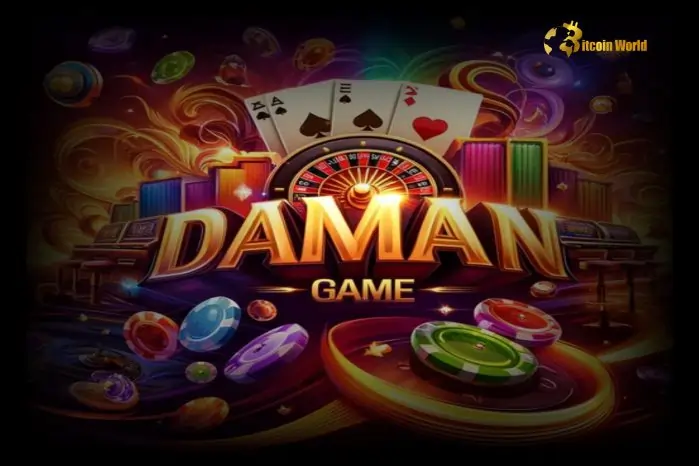Long before smartphones buzzed with notifications and video game consoles lit up living rooms, there existed a world where the biggest thrill came from a small glass ball. The Daman Game, known by many names such as Kancha, Goti, Marbles, or Guli, was once an iconic part of childhood for millions across South Asia, the Middle East, and Africa. Played on dirt fields, backyards, or quiet village corners, this game of skill and luck was more than a pastime — it was a cultural ritual.
Today, as children grow up surrounded by digital gadgets, traditional games like Daman are fading fast. Yet, despite this shift, efforts to revive and preserve such heritage are emerging, both offline and online. This article explores the historical journey of the Daman Game, its decline, and how it might find a second life on digital screens and in modern society.
The Heart of the Game
At its essence, the Daman Game involves using a larger marble — often called a shooter or “daman” — to strike other marbles out of a circle or into a small hole in the ground. Players compete to collect marbles or score points, using precision, hand-eye coordination, and strategic thinking.
Each region brought its own variation of the rules:
- In some versions, players try to knock marbles out of a chalk circle.
- In others, the objective is to sink marbles into a dug-out hole while avoiding opponents’ shots.
- Some play for keeps, while others play just for fun.
Despite its regional variations, the game remains universally simple, requiring only marbles and an open space.
A Cultural Cornerstone
For generations, the Daman Game was more than just child’s play. It was a social activity, a skill-building exercise, and an informal teacher of ethics, patience, and resilience.
- Social Bonding: Whether played in dusty village courtyards or city alleys, the game brought together children of all backgrounds. Teams formed spontaneously, rules were negotiated on the spot, and laughter echoed across neighborhoods.
- Emotional Development: The game offered a crash course in winning graciously and losing with dignity. Losing a prized marble could sting, but it taught players about risk, acceptance, and the importance of practice.
- Cultural Identity: Each community added its own flavor to the game. The types of marbles, the names of moves, and even the superstitions surrounding “lucky” damans became part of local lore.
In many rural communities, elders still fondly recall their childhood marbles — often stored in tins, cloth bags, or even buried in secret hiding spots to protect them from siblings and rivals.
From Decline to Disappearance
Despite its popularity for centuries, the Daman Game saw a sharp decline in the late 20th and early 21st centuries. Several factors contributed to this erosion:
1. Urbanization
As open spaces in cities shrank to make room for buildings and infrastructure, children lost access to playgrounds where traditional games flourished. Concrete replaced soil, and traffic replaced safe streets.
2. Rise of Digital Entertainment
With the advent of television, gaming consoles, and later smartphones, digital entertainment became more convenient and appealing. Why go outside to play when entertainment is just a tap away?
3. Academic Pressure
Increased academic expectations and time-consuming tuition schedules left children with little free time to engage in unstructured play. Outdoor games were deprioritized in favor of structured learning.
4. Changing Parental Attitudes
Modern parents, concerned about safety and hygiene, often discourage outdoor activities in favor of indoor ones. As a result, many children today grow up without ever experiencing the thrill of a Daman duel.
The Digital Opportunity
While technology has contributed to the decline of traditional games, it might also be the very tool that preserves and revitalizes them. The digital age offers unique opportunities to bring the Daman Game to new audiences in new formats:
1. Mobile Apps and Video Games
Several indie developers have started creating Daman-inspired mobile games that simulate the flicking action and strategic gameplay of the original. These apps reintroduce the thrill of the game to kids who may never have played it on the ground.
Digital marbles can be customized, upgraded, and collected — echoing the childhood joy of building one’s own marble collection.
2. Virtual Reality (VR)
Imagine playing a highly realistic version of the Daman Game in a VR space that replicates dusty fields or village courtyards. This approach could blend tradition with cutting-edge technology, attracting both nostalgic adults and curious youth.
3. YouTube and Social Media Revival
Many content creators are posting videos demonstrating how the game is played, sharing stories of its cultural significance, and teaching modern audiences its rules. These videos, often reaching thousands of views, help spread awareness and rekindle interest.
4. Educational Platforms
Schools and NGOs can use digital platforms to teach children about traditional games. Interactive videos, animations, and game-based learning tools can make the Daman Game part of cultural and physical education curricula.
Reviving the Game in Real Life
While digital adaptation is important, the real essence of the Daman Game lies in its physical, face-to-face play. Reviving it in real life is essential for preserving its spirit:
- In Schools: Teachers can dedicate one day a week to traditional games, including Daman, as part of physical activity or heritage education.
- In Communities: Local clubs and cultural organizations can host annual Daman tournaments, with prizes and storytelling sessions that attract both players and spectators.
- At Home: Parents and grandparents can pass the tradition down by teaching children how to play, sharing their own stories, and even handing down old marble collections.
In both physical and digital realms, the Daman Game can survive — but only if intentional steps are taken to preserve and promote it.
Why It’s Worth Saving
The Daman Game may seem like a relic of the past, but it holds timeless value. Here’s why keeping it alive matters:
- Health Benefits: It encourages movement, focus, and time outdoors — countering screen fatigue and sedentary lifestyles.
- Cognitive Growth: Strategy, calculation, and precision make it a mentally stimulating game.
- Cultural Preservation: It’s a living link to generations past and a celebration of heritage.
- Affordability and Accessibility: Unlike modern games, it doesn’t require expensive gear — just marbles and imagination.
Conclusion
The Daman Game, once a central feature of childhood in many cultures, has rolled into the shadows in today’s digital age. But all is not lost. From mobile apps to cultural festivals, and from school playgrounds to social media, there’s still a path forward.
By combining the old with the new — from dirt fields to digital screens — we can keep this beautiful tradition alive. Not as a relic in a museum, but as a living game, filled with joy, competition, and connection. After all, sometimes the smallest things — like a marble — can carry the biggest stories.
Calculate Your Future Wealth with the Best ULIP Plans and Return Tools


